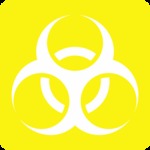Medical Waste
Medical waste, also called biomedical waste or health-care waste, includes all the waste generated within healthcare facilities. A now-expired US law called it “any solid waste produced in the diagnosis, treatment, and immunization of human beings or animals, in research pertaining thereto, or in the production or testing of biologicals.” Four terms are used more or less interchangeably by some people: medical waste, hospital waste, infectious medical waste, and regulated medical waste. However, medical waste and hospital waste are too general and could refer to non-hazardous waste which the speaker may not intend. You have to be careful in terminology in the waste industry.
Sources of health-care waste
Hospitals
Physicians’ offices
Dental clinics
Emergency medical care facilities
Pharmacies
Outpatient clinics
Dialysis centers
Transfusion centers
Prison hospitals or clinics
Medical and biomedical laboratories
Biotechnology laboratories and institutions
Mortuary and funeral services
Convalescent nursing homes
Morgues
Animal research and testing labs
Blood banks and blood collection services
Nursing homes
Chiropractor offices
Disabled persons’ institutions
Cosmetic ear-piercing and tattoo parlours
Illicit drug users and needle exchanges
Ambulance services
Home healthcare services
Departments at hospitals that make medical waste include:
- anesthesia
- dialysis
- clinical laboratories
- morgue
- nuclear medicine
- oncology
- radiology
- pathology/histology
- pharmacy
- respiratory care
- surgery
It is estimated that hospitals produce about 20 lb/bed per day of waste, of which 10% is infectious waste.
 Most (up to 90%) of the waste produced by healthcare providers is like that produced in other businesses - managers and regulators call it “non-hazardous” or “general healthcare waste”. It comes mostly from the administrative, kitchen and housekeeping functions at health-care facilities and may also include packaging waste and waste generated during maintenance of health-care buildings. In the US we call this municipal solid waste (MSW) and it is disposed of in sanitary landfills with little or no treatment.
Most (up to 90%) of the waste produced by healthcare providers is like that produced in other businesses - managers and regulators call it “non-hazardous” or “general healthcare waste”. It comes mostly from the administrative, kitchen and housekeeping functions at health-care facilities and may also include packaging waste and waste generated during maintenance of health-care buildings. In the US we call this municipal solid waste (MSW) and it is disposed of in sanitary landfills with little or no treatment.
The remaining 10–25% of medical waste is regarded as hazardous and requires special handling, treatment, and disposal. We can classify medical waste:
Sharps waste
Used or unused sharps (e.g. hypodermic, intravenous or other needles; auto-disable syringes; syringes with attached needles; infusion sets; scalpels; pipettes; knives; blades; broken glass). Sharps used in veterinary practice are also sharps waste.
Infectious waste
Waste suspected to contain pathogens and to pose a risk of disease transmission. For instance, waste contaminated with blood or other body fluids; laboratory cultures and microbiological stocks; bodily waste and bandages from patients with highly infectious diseases.
Pathological waste
Human tissues, organs or fluids; body parts; fetuses; placentas. More on treatment of pathological waste.
Pharmaceutical waste
Pharmaceuticals that are expired or no longer needed; materials contaminated by or containing pharmaceuticals.
Cytotoxic waste
Often a considered subcategory of pharmaceutical waste. Cytotoxic means it kills human cells; this is often how chemotherapy drugs work, so chemotherapy drugs and items with those drugs on them are often called cytotoxic waste.
Chemical waste
Contains chemical substances. Although this term is used by the lay public, it is not useful for medical waste professionals.
Radioactive waste
Waste containing radioactive materials, Medical waste that is radioactive comes from radiotherapy, laboratory research; contaminated glassware, packages or absorbent paper; urine and excreta from patients treated or tested with unsealed radionuclides. Radiation sources include:
- Fluorine-18 (F-18) – with a half-life of 110 minutes
- Technetium-99 (T-99m) – with a half-life of 6 hours
- Iodine-131 (I-131) – with a half-life of 8 days
- Strontium-89 (Sr-89) – with a half-life of 52 days
- Iridium-192 (Ir-192) – with a half-life of 74 days
- Cobalt-60 (Co-60) – with a half-life of 53 years
Non-hazardous or general health-care waste
Waste that does not pose any particular biological, chemical, radioactive or physical hazard. Municipal solid waste.
World Health Organization on Medical Waste
California Department of Public Health Medical Waste Management Program
Michigan Department of Environmental Quality
Health Care Without Harm on Medical Waste